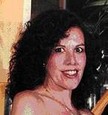With the holiday season upon us and the New Year fast approaching, most of us start thinking “New Year’s Resolutions.” We can’t help it. A New Year. A new beginning. A clean slate. It’s like being born all over again. We can start from scratch, be any thing or any body we want. Cast off the old, bring on the new.
We have such great intentions.
We have such lofty ideals.
But then reality sets in. Life happens. Trying to earn a living. Parenting our kids. Maybe parenting our parents. Being a good spouse. Or a bad one. Celebrating good relationships. Celebrating the end of bad ones.
Resolutions don’t usually last very long. They can’t. They’re too broad. They’re generalizations. They are in the form of thoughts and therefore have no substance.
Resolution: “I’m going to lose weight this year.”
Sounds good. But how will I lose weight? When will I lose weight? If I do lose weight, how much? Over how long? How many times this year will I lose weight? The questions are never-ending.
Do you see how impossible it is to actually do what you resolve to do? There are too many variables; too many unknowns.
Instead of making resolutions for the coming year (again), how about we set some goals? Goals are easy. I don’t mean long-term goals. They’re good to strive for, like crossing the finish line after a long race. I’m talking about goals that are small, easy to accomplish, and don’t take a long time to achieve.
Let’s revisit our weight loss resolution, but put it in the context of a goal. The first thing we have to do is refine and define it. Let’s go right to the finish line and be specific about describing what that finish line looks like: “I am going to lose 10 pounds by the end of May.”
How does that look to you? How does it feel? Does it seem reasonable to you? From the beginning of January until the end of May is 5 months. That means you would need to lose 2 pounds per month, or half a pound a week over the course of the 5 months to achieve your goal.
Seems very reasonable to me.
But that’s only one part of setting a goal. How are you planning to accomplish your goal? The answer is in the question. You need to have a plan. A plan is simply a list of small goals that you need to achieve in order to reach your finish line. The smaller the goal to be accomplished over the shortest period of time is the best plan.
Let’s get back to our goal of losing 10 pounds in 5 months. Oops! Too big. Too long. Losing half a pound in one week seems alot more do-able to me. Don’t you agree?
How can I lose half a pound in a week? The choices are almost limitless. First, I need to look at what I eat. Do I get a donut every morning with my coffee? Speaking of coffee, how many packets of sugar do I dump in that cup? Do I get some super-sized concoction at some fast food place for breakfast or lunch? What is my snack of choice, and how many do I have in a day?
Pick one. That’s it. Just one. Pick one thing you’d be willing to modify or give up altogether, and think of something to put in its place. If you’re giving up your donut, how about fat free yogurt with granola and raisins for a sweet crunch? Maybe you could leave off one of those packets of sugar. How about swapping that super-sized monstrosity for a regular burger, sandwich, or salad with some raw veggies or baked chips?
I think you’d be able to make one small change in your diet. What do you think? Piece of cake. Oh, sorry.
Then, you could add 10 steps per day of walking. Not 10 stairs. Just 10 steps. Maybe you could park a few spaces further from the entrance to work or shopping. Walk the dog instead of tying it up or just letting it out in the yard. It’s good to have a buddy. And don’t forget to dance. Dance in the shower – don’t just stand there singing! Dance while you brush your teeth. Get up and dance while you watch TV (some of those commercials are pretty catchy . . . ).
Before you know it, you’ll be well on your way to reaching your goals. Just remember to take baby steps and each week add one small additional change.
Patti is a registered nurse and health coach with a specialty in cardiac health. She has proven that with the right tools and guidance, anyone with a desire to change the course of their life can make lifestyle modifications painlessly and successfully. In addition to individual coaching, she works with small to mid-sized businesses to develop workplace wellness programs, improving attendance and employee morale and creating an atmosphere of partnership between employer and employee. She has also designed and implemented education and precepting programs, public access defibrillator, and cardiac rehab programs.
She is a certified American Heart Association BLS, AED, and First Aid instructor.
She is the President/CEO of My CardioResource and My-Med-Keeper.
www.mycardioresource.com
www.my-med-keeper.com

Post new comment
Please Register or Login to post new comment.